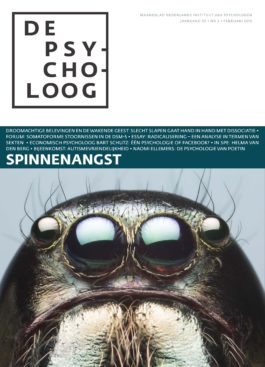Inleiding
Iedere therapeut herkent het: cliënten met hardnekkige overtuigingen waarbij verstandelijke inzichten het afleggen tegen gevoelens. Deze gevoelens worden vaak gezien als validatie van gedachten als ‘Ik voel me waardeloos, dus ik ben waardeloos’ bij depressie, ‘Ik voel me dik, dus ik ben dik’ bij eetstoornissen en ‘Ik voel me angstig, dus er is gevaar’ bij angststoornissen. Deze manier van denken wordt emotioneel redeneren genoemd.
Emotioneel redeneren wordt ook wel in het rijtje van ‘denkfouten’ geplaatst. Het voorbeeld ‘Een hond heeft een staart, dus als ik een staart zie moet het een hond zijn’ illustreert de fout in de gedachtegang. Zo betekent ‘Als er gevaar is, voel ik me angstig’ dus niet per se ‘Als ik me angstig voel, dan is er gevaar’. De neiging tot emotioneel redeneren is onderzocht door Arntz en collega’s (1995) bij patiënten met verschillende angststoornissen (spinnenfobie, paniekstoornis, sociale angststoornis en een gemengde groep met overige angststoornissen) en bij een gezonde controlegroep.





